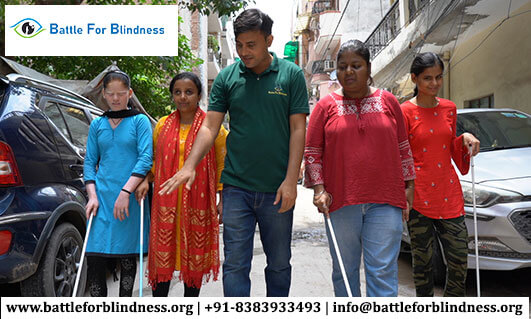
Color blindness is a condition that affects millions of people worldwide, making it difficult to distinguish between certain colors. While it’s often considered a visual impairment, those who experience it find innovative ways to overcome challenges and live fulfilling lives. In this blog, we explore creative solutions that can help those with color blindness navigate everyday tasks, from selecting clothing to using technology.
Understanding Color Blindness
Color blindness, also known as color vision deficiency, is more common than most people think. It impacts approximately 1 in 12 men and 1 in 200 women globally. Those affected by color blindness often struggle to differentiate between shades of red, green, blue, or yellow, depending on the type of color blindness they have. While it’s not a disease, it can present significant challenges, especially in a world designed with color-coded systems.
Everyday Challenges Faced by the Color Blind
- Clothing Choices: Picking the right clothes can be a tricky task for someone with color blindness. Selecting outfits that match or complement each other becomes a guessing game.
- Navigating Traffic Lights: Identifying traffic signals can be especially challenging when the colors of the lights seem similar to those with certain types of color blindness.
- Identifying Food or Drink: For individuals with color vision deficiency, identifying the ripeness of fruits or choosing the correct drink in a store might be more difficult, as they rely on color cues.
- Tech and User Interfaces: Many apps and websites use color codes to convey important information, which can create barriers for visually impaired users.
Creative Solutions to Overcome These Challenges
- Smart Glasses and Color Identification Apps
Technology has revolutionized how people with color blindness interact with the world. Smart glasses like EnChroma glasses and ColorCorrection lenses are designed to filter light and enhance color perception for those with color vision deficiency. These glasses can help wearers experience colors more vividly, improving their daily experiences.
Additionally, mobile apps like Color Blind Pal and Chromatic Vision Simulator are designed to help users identify and differentiate colors. These apps use your phone’s camera to detect the color in real-time and offer verbal or visual descriptions, making it easier to navigate color-dependent environments.
- Color-Coded Labeling Systems
For individuals who struggle with identifying colors, a creative solution is the use of color-coded labeling systems. Labels with textures, shapes, or braille can be applied to clothing, food items, or household products. For example, different patterns or fabric types on clothing tags can help distinguish items from one another.
- Technology-Enhanced Clothing Choices
There are now fashion-forward solutions for the color blind, with brands creating clothes that cater to those with color blindness. Some clothing companies are designing garments with patterns that help colorblind individuals differentiate between different types of apparel. These include shirts with labels that are easy to identify based on their pattern or fabric structure.
- Voice-Activated Technology
Voice-activated technology is a game-changer for visually impaired individuals. Tools like Amazon Alexa, Google Assistant, and Siri can be used to help identify colors in real-time. For example, users can ask, “What color is this shirt?” or “What color is the traffic light?” These solutions help enhance autonomy, especially when out in public or making decisions based on color.
- Apps for Navigation and Traffic Signals
While traffic lights present a challenge, there are apps designed to make navigation easier for colorblind individuals. Apps like Be My Eyes and Aira connect visually impaired users with real-time assistance from sighted volunteers. These services provide valuable help in identifying traffic signals and other public signage that relies heavily on color.
- Improving User Interface Design
In the digital world, many apps and websites still rely heavily on color to communicate information, which can be a barrier for individuals with color blindness. The solution? Accessibility features that allow for high-contrast themes or customizable color schemes, making digital content more inclusive.
For instance, users can use the colorblind mode on smartphones, adjust screen contrast, or enable color-blind friendly themes in apps and websites. Designers are now more focused on creating digital products that are inclusive, with color accessibility being an important consideration.
Tips for Friends and Family of Color Blind Individuals
Supportive communities can make a world of difference for those navigating life with color blindness. If you have a friend or family member who is color blind, here are a few simple steps to make their daily life easier:
- Use Descriptive Language: Instead of saying, “That shirt is red,” try describing it in terms of its texture, fabric, or location (“The shirt in the top row”).
- Label Items Clearly: Labeling objects with more than just color-based identifiers (e.g., shapes or names) helps colorblind individuals identify items quickly.
- Be Understanding: While color blindness may seem like a minor inconvenience to some, it can be a significant challenge for those who experience it. Patience and understanding go a long way in helping them navigate daily tasks.
Conclusion
Color blindness doesn’t have to limit a person’s ability to live independently. With creative solutions like color identification apps, smart glasses, and accessible technology, individuals with color vision deficiencies can confidently navigate their world. By fostering inclusivity through adaptive solutions and design, we can ensure that everyone, regardless of their visual abilities, can thrive in a colorful world.





